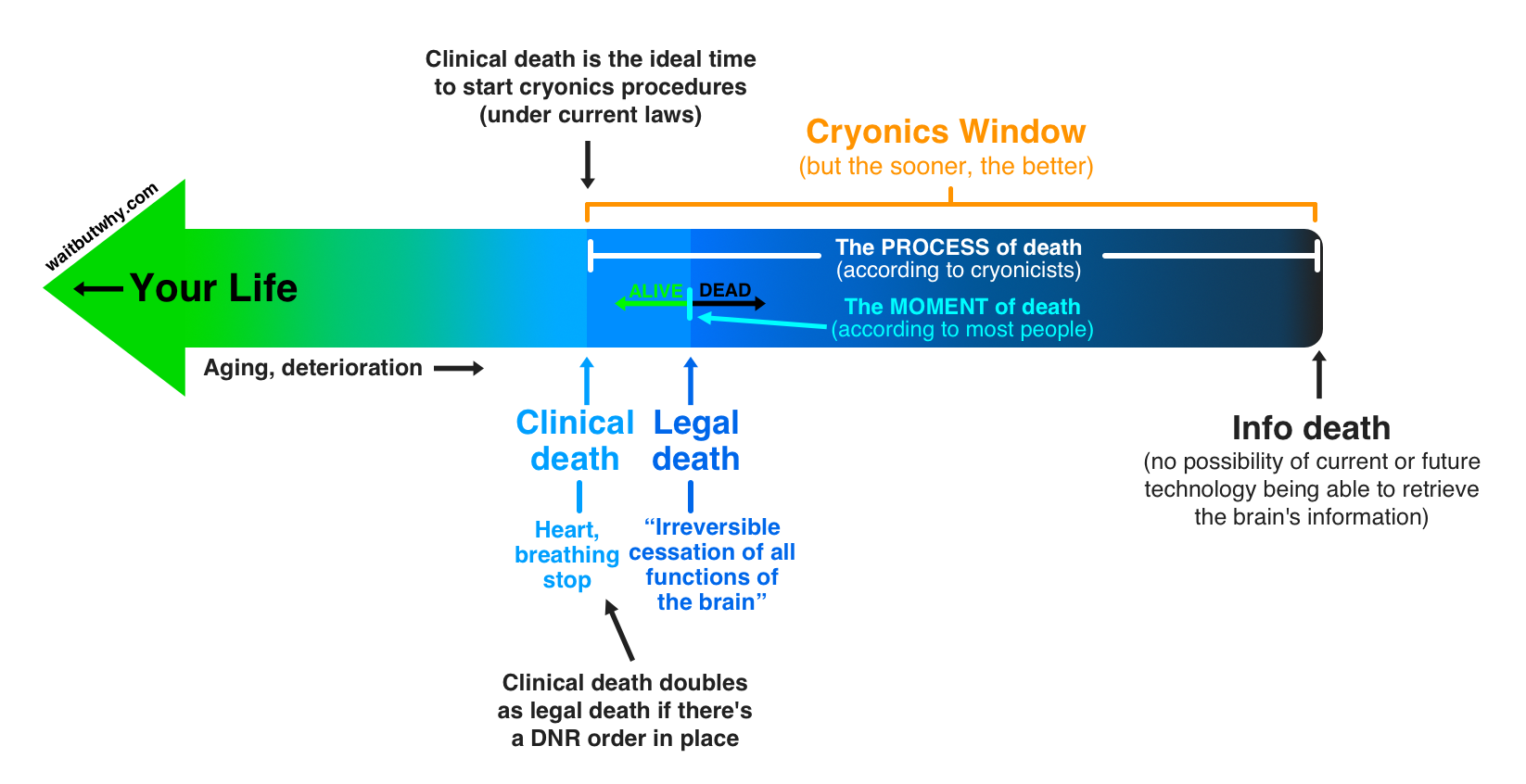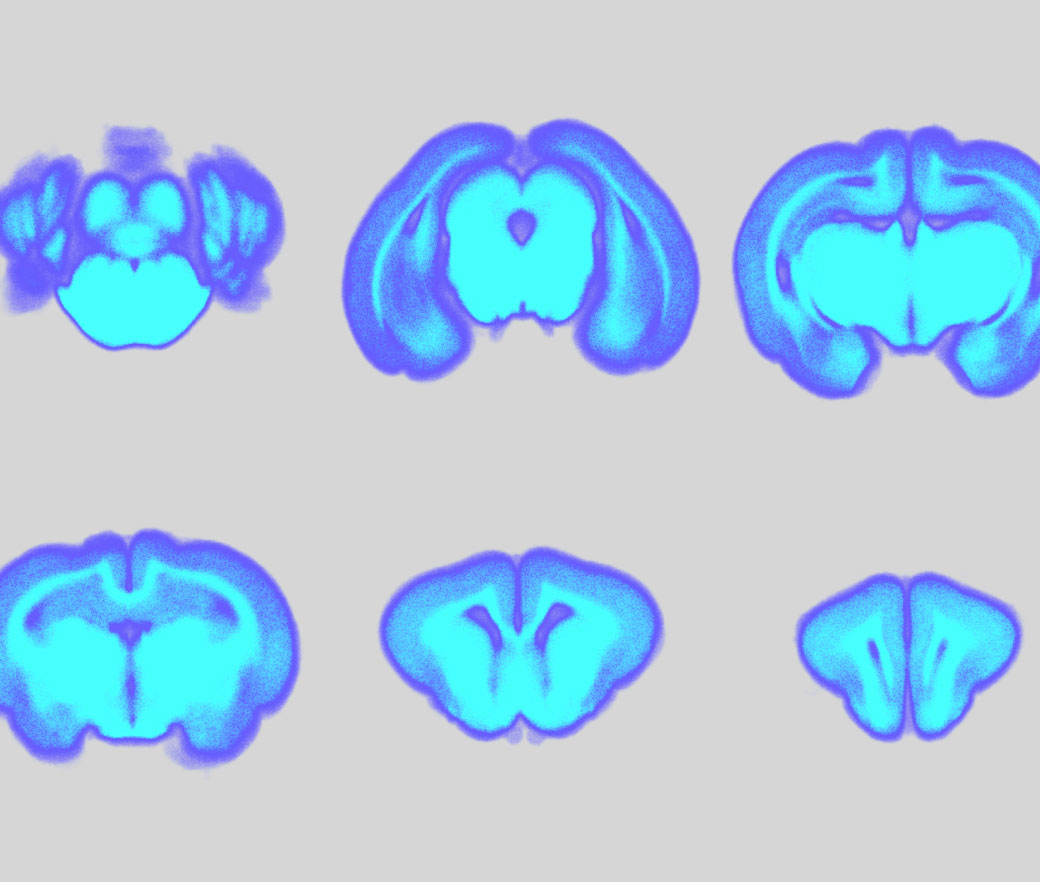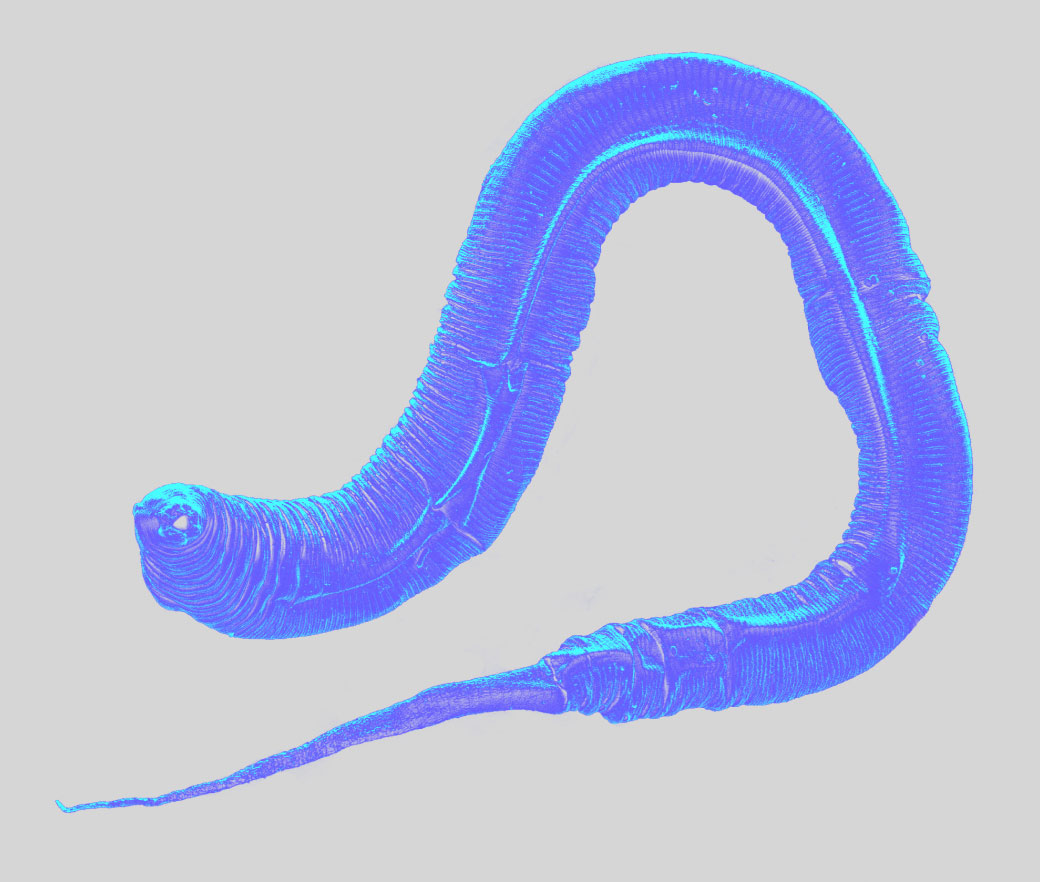Cryonics

Human cryonics matters because it has the potential to allow people to be preserved at the cellular level and revived in the future. This could potentially allow humans to be resurrected after death. There are many research breakthroughs that still need to be made.
Cryopreservation, or the process of freezing cells, has been used for years by medical laboratories to preserve animal cells, human embryos, and even some organized tissues. However, it is not currently possible to revive large animals or organs from a frozen state. Large vitrified organs tend to develop fractures during cooling, and without cryoprotectants, cell shrinkage and high salt concentrations during freezing usually prevent frozen cells from functioning again after thawing. Ice crystals can also disrupt connections between cells that are necessary for organs to function.
Cryonicists argue that, as long as brain structure remains intact, it is possible to recover its information content. Cryonics proponents go further than the mainstream consensus in saying that the brain does not have to be continuously active to survive or retain memory. Cryonics controversially states that a human survives even within an inactive brain that has been badly damaged, provided that original encoding of memory and personality can, in theory, be adequately inferred and reconstituted from what structure remains.
Cryonics uses temperatures below −130 °C, called cryopreservation, in an attempt to preserve enough brain information to permit the future revival of the cryopreserved person. Cryopreservation may be accomplished by freezing, freezing with cryoprotectant to reduce ice damage, or by vitrification to avoid ice damage. Even using the best methods, cryopreservation of whole bodies or brains is very damaging and irreversible with current technology.
Cryonics advocates hold that in the future the use of some kind of presently-nonexistent nanotechnology may be able to help bring the dead back to life and treat the diseases which killed them. Mind uploading has also been proposed.
Cryopreservation science involves using extremely low temperatures to halt biological processes without causing freezing damage. This technique incorporates cryoprotective agents, akin to medical-grade antifreeze, to minimize ice crystal formation.
Key Achievements:

Mammal Brain Preservation:
- Research Conducted By: Kenneth Hayworth, Brain Preservation Foundation.
- Technique: Developed by Gregory Fahy and Robert McIntyre at 21st Century Medicine in Fontana, California.
- Process: Immediate blood drainage and replacement with glutaraldehyde to halt decay, followed by gradual cryoprotectant addition to prevent dehydration. The brain is cooled to -135 °C for vitrification.
- Significance: First successful defrosting of a cryogenically preserved mammal brain in near-perfect condition, indicating potential future capabilities for human brain preservation.

Mammal Organ Cryopreservation:
- Research Conducted By: Gregory M Fahy, Brian Wowk, et al.
- Approach: Vitrification, avoiding ice formation through high concentrations of cryoprotective agents.
- Specific Case: Successful vitrification and transplantation of a rabbit kidney, indicating potential for long-term organ preservation.
- Challenges Addressed: Ensuring adequate cryoprotectant distribution, particularly in the renal medulla, and balancing cryoprotectant toxicity.

C. elegans Memory Retention Post-Cryopreservation:
- Research Conducted By: Natasha Vita-More and Daniel Barranco.
- Method: Olfactory imprinting in young C. elegans, followed by vitrification and revival.
- Findings: Demonstrated retention of long-term memory (olfactory imprinting) in C. elegans post-vitrification.
- Implications: Offers insights into the preservation of memory in simple organisms undergoing cryopreservation, opening avenues for future research on memory retention in more complex systems.
Get involved
“We initiated CryoDAO with the aim of increasing funding for research in cryopreservation. The interest in this area is at an all-time high, yet the research activity remains insufficient. Even modest funding could lead to substantial advancements, like developing new cryoprotective agents to lower toxicity, or formulating varied cryoprotection protocols for ischemic conditions. The goal of CryoDAO is to support research projects in cryopreservation that are likely to significantly enhance its quality and effectiveness.”
- Join us here: cryodao.org
Links
- Why Cryonics Makes Sense by Tim Urban
- Cryonics Wikipedia
- Sentiment Towards Biostasis: A Comprehensive Report
- Worms Revived After 46,000 Years in Siberian Permafrost
- Mammal brain frozen and thawed out perfectly for first time
- FROZEN IN TIME: Scientists are learning how to cryopreserve living tissues, organs, and even whole organisms, then bring them back to life
Resources
Overview of best starting points to learn more about the science behind cryopreservation
High level articles
- Why Cryonics Makes Sense - Tim Urban. A primer on why it makes sense to sign up to cryonics.
- https://biostasis.com/
- https://www.tomorrow.bio/intro-to-cryopreservation
- Cryonics - Reason. A brief explainer on the main concepts and controversies in cryonics.
- Cryostasis Revival - Robert Freitas. Book about nanomedicine for revival.
- Cryonics: Alcor FAQ - Alcor. An FAQ about cryonics, and about the practices of the provider Alcor.
- Alcor vs. Cryonics Institute - Lesswrong. A comparison of Alcor versus the Cryonics Institute as providers for cryonics services. Now there is also TomorrowBiostasis, a European Cryonics Company.
Cryonics Q&A & Sign-up - Foresight Institute. A sign-up tutorial with Alcor and TomorrowBiostasis.
- https://waitbutwhy.com/2016/03/cryonics.html
- https://www.alcor.org/what-is-cryonics/
- https://www.tomorrow.bio/intro-to-cryopreservation
- https://benbest.com/cryonics/CryoFAQ.html
- https://www.tomorrow.bio/rd-roadmap
- http://www.ralphmerkle.com/cryo/
- https://www.alcor.org/library/problems-associated-with-cryonics/
- https://archive.ph/MlkX6
- https://cryonics.org/case-for-cryonics/
- https://www.alcor.org/library/
- https://pubmed.ncbi.nlm.nih.gov/?orig_db=PubMed&cmd=Search&defaultField=Title%20Word&term=cryonics
- https://www.alcor.org/library/selected-journal-articles-supporting-the-scientific-basis-of-cryonics/
- https://www.alcor.org/library/notable-quotes/
- http://www.zyvex.com/nano/
- https://www.lesswrong.com/posts/yKXKcyoBzWtECzXrE/you-only-live-twice
- https://www.lesswrong.com/posts/hiDkhLyN5S2MEjrSE/normal-cryonics
- https://www.newsweek.com/rabbit-brain-first-mammal-brain-return-successfully-cryopreservation-424913
- http://www.ralphmerkle.com/cryo/wager.html
- https://www.alcor.org/library/introduction-to-alcor-procedures/
- https://www.alcor.org/library/myths-about-cryonics/
High level videos
- Elon Musk on Cryonics
- The Science of Biostasis and Cryopreservation with Kai Micah Mills & Dr. Emil Kendziorra
- Cryopreservation Explained
- Cryopreservation for Regenerative Medicine workshop, Part 1, Session 1
Scientific books
- https://www.tomorrow.bio/post/12-must-read-books-about-cryonics
- Cryopreservation and Freeze-Drying Protocols (Methods in Molecular Biology)
- Freezing Fertility: Oocyte Cryopreservation and the Gender Politics of Aging
Sources
https://www.existentialhope.com/posts-articles/cryonics-4
https://waitbutwhy.com/2016/03/cryonics.html